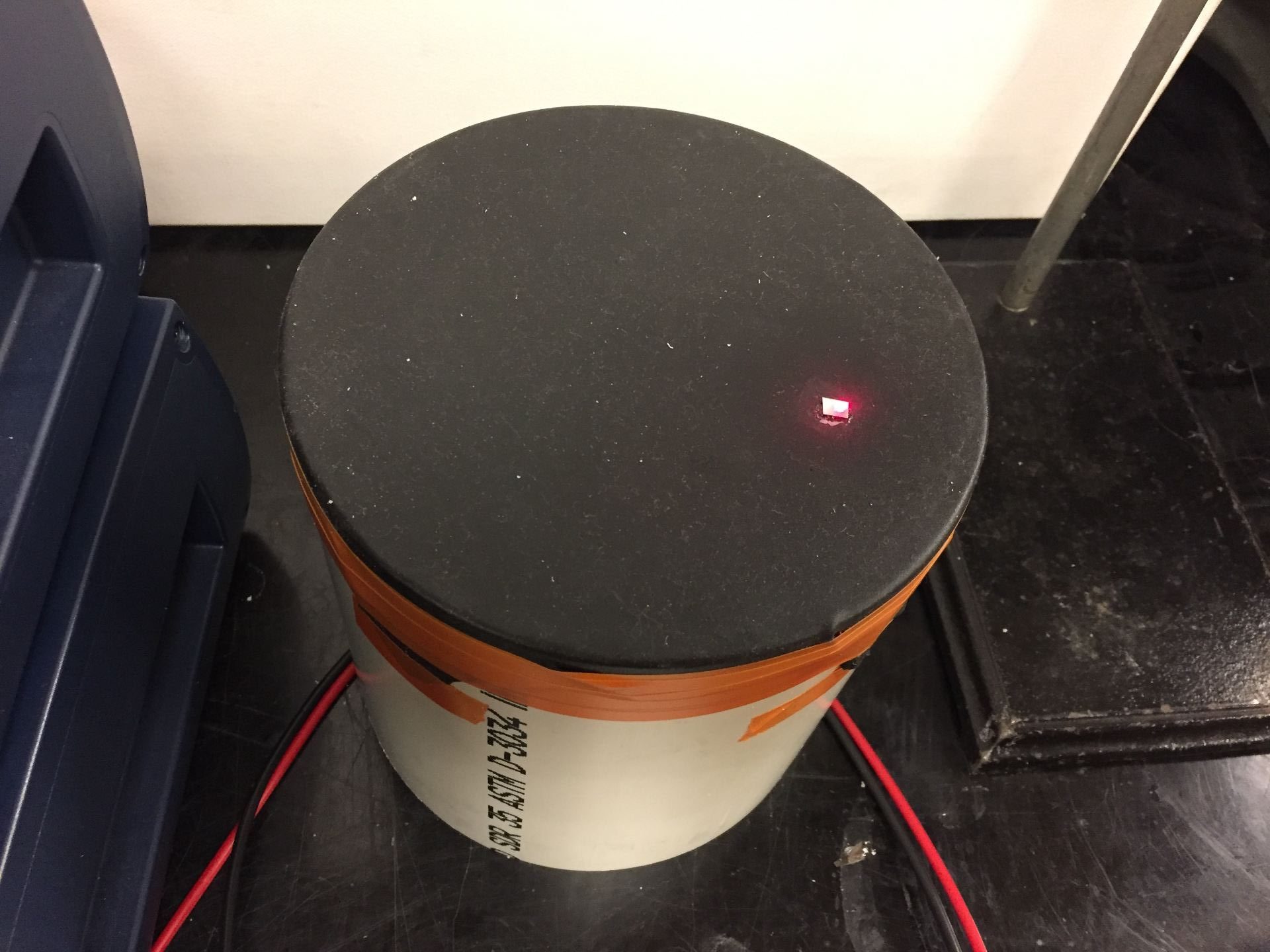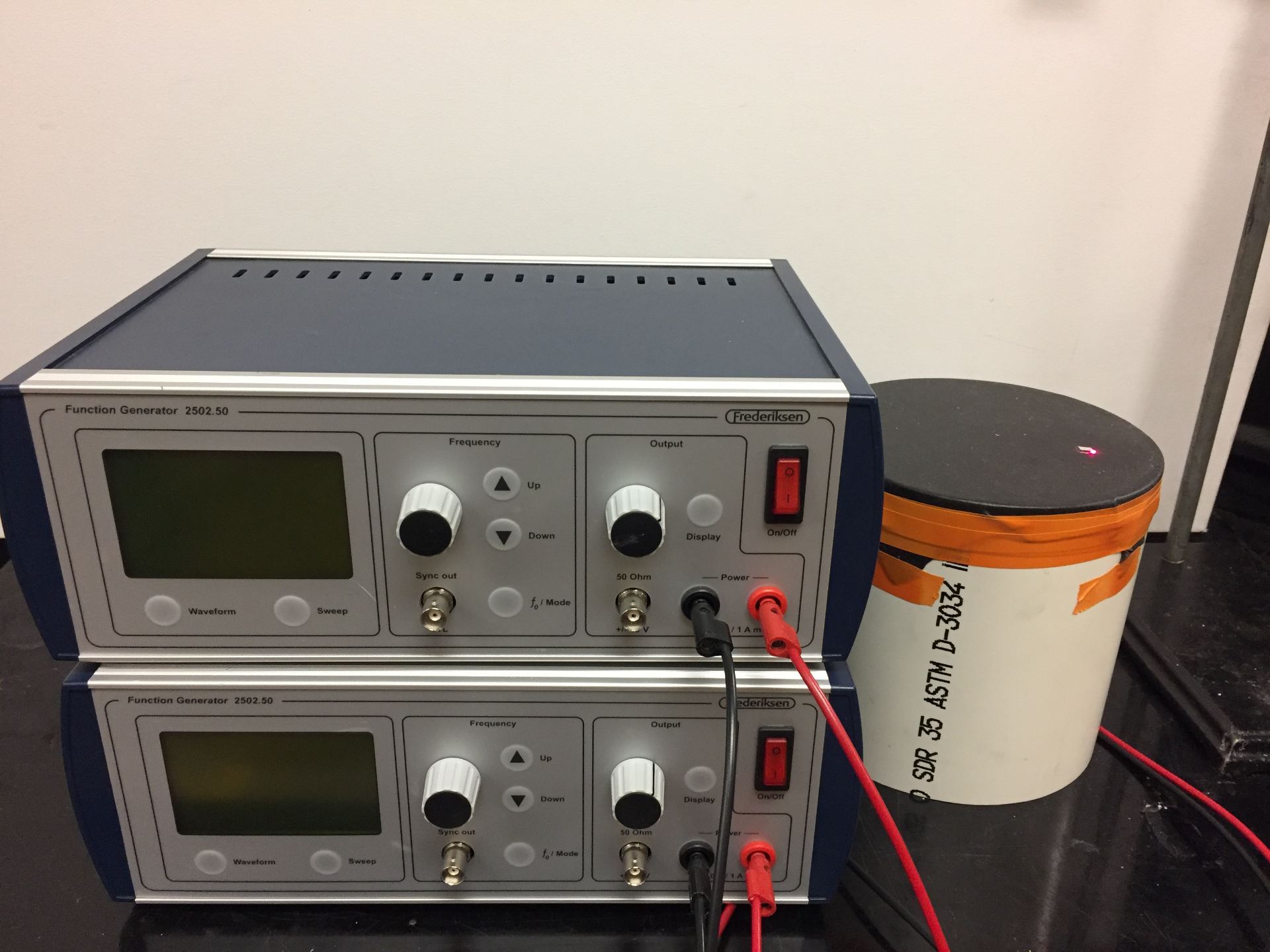Spectacular laser-drawn figures as a result of the combination of two tones driving a silicone membrane.
Video Coming Soon!
Equipment:
- Mirror on Membrane
- Two Speakers (each speaker is mounted onto a wooden block and each has two banana cables)
- Two Function Generators (Frederiksen 250250)
- Laser (Small, black laser mounted on a rod and stand)
- Screen (we can provide a canvas screen, otherwise the projector screen in most lecture halls work well)
- Amplifier (for playing music)
Demo:
- Aim the laser on to the mirror at an angle such that it is able to be seen on the screen. The further the apparatus is from the screen the larger the figures will be.
- Turn on the function generators. The laser will trace out curved paths and Lissajous figures on the screen.
- Use the amplifier for playing music through one of the speakers.
Explanation:
The fragment of mirror represents a sample of the movement on the membrane when sound propagates through it. The laser reflects off the mirror and hits the screen. Any movement in the mirror will change the direction of the reflected beam. If music is played through the speaker, you will see a chaotic pattern in the reflected beam. However if you play pure tones you will get some very cool and interesting effects.
- The sound waves are created by the moving speaker cones that displace air. The displaced air then displaces the membrane which is then shown in the motion of the laser beam.
- As the amplitude (volume of the tones) increases the size of the displacement of the membrane will also increase. This will create a larger image on the screen. The pitch of the tone can also be seen and related to the frequency being pumped out of the speaker.
- When two speakers are playing at the same time you will observe some beautiful Lissajous figures. When the two speakers are playing frequencies that are integer multiples the figures should be in phase and not move. However, if they are not in perfect phase alignment the figure will drift.
Lissajous figures are patterns created by the intersection of two sinusoidal curves.
Written By Nick McCabe

